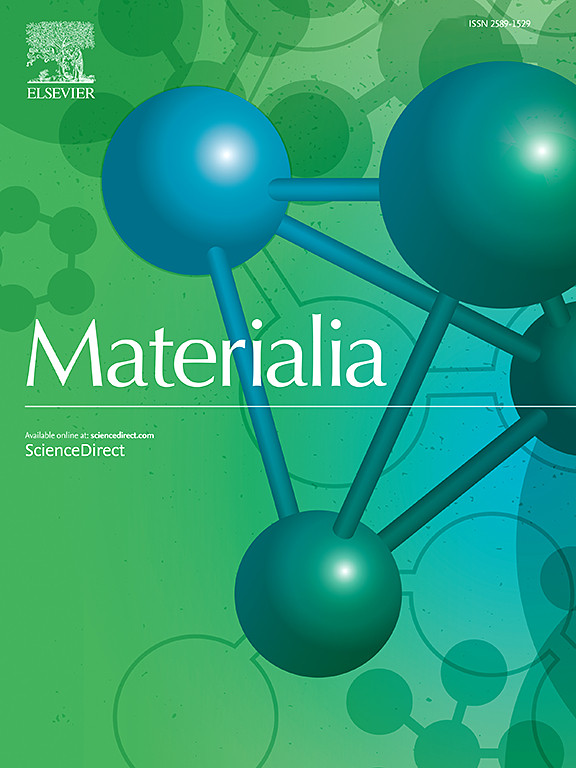惠特洛克石可以作为模拟体液中磷灰石生长的基质
IF 3
Q2 MATERIALS SCIENCE, MULTIDISCIPLINARY
引用次数: 0
摘要
磷酸钙是人类主要的矿物质类型。它们对骨骼和牙齿的形成至关重要,但也会沉积在病变组织中。惠特洛克石是一种磷酸钙矿物,几乎只存在于病变的钙化病灶中。尽管具有重要意义,但人们对怀特洛克石在生理条件下的晶体生长机制了解甚少。为了研究这一点,我们进行了恒定组成实验,并应用生长动力学模型研究了whitlockite和hydroxyapatite纳米颗粒在模拟体液中的生长。与我们的预期相反,whitlockite并没有溶解在不饱和的模拟体液中。相反,whitlockite纳米颗粒作为形成低结晶磷灰石的基质,导致颗粒尺寸增加。我们的发现可能有助于解释人类疾病中whitlockite颗粒和大的不良结晶磷灰石病变的共定位。本文章由计算机程序翻译,如有差异,请以英文原文为准。

Whitlockite can be a substrate for apatite growth in simulated body fluid
Calcium phosphates are the predominant type of mineral in humans. They are essential for the formation of bones and teeth but can also deposit in diseased tissues. Whitlockite, a calcium phosphate mineral, is almost exclusively found in diseased calcified lesions. Despite its significance, the crystal growth mechanisms of whitlockite under physiological conditions are poorly understood. To investigate this, we conducted a constant composition experiment and applied a growth kinetics model to study the growth of whitlockite and hydroxyapatite nanoparticles in simulated body fluid. Contrary to our expectations, whitlockite did not dissolve in the undersaturated simulated body fluid. Instead, whitlockite nanoparticles served as a substrate for the formation of poorly-crystalline apatite, resulting in increased particle size. Our findings may help explain the colocalisation of whitlockite particles and large poorly-crystalline apatite lesions in human diseases.
求助全文
通过发布文献求助,成功后即可免费获取论文全文。
去求助
来源期刊

Materialia
MATERIALS SCIENCE, MULTIDISCIPLINARY-
CiteScore
6.40
自引率
2.90%
发文量
345
审稿时长
36 days
期刊介绍:
Materialia is a multidisciplinary journal of materials science and engineering that publishes original peer-reviewed research articles. Articles in Materialia advance the understanding of the relationship between processing, structure, property, and function of materials.
Materialia publishes full-length research articles, review articles, and letters (short communications). In addition to receiving direct submissions, Materialia also accepts transfers from Acta Materialia, Inc. partner journals. Materialia offers authors the choice to publish on an open access model (with author fee), or on a subscription model (with no author fee).
 求助内容:
求助内容: 应助结果提醒方式:
应助结果提醒方式:


